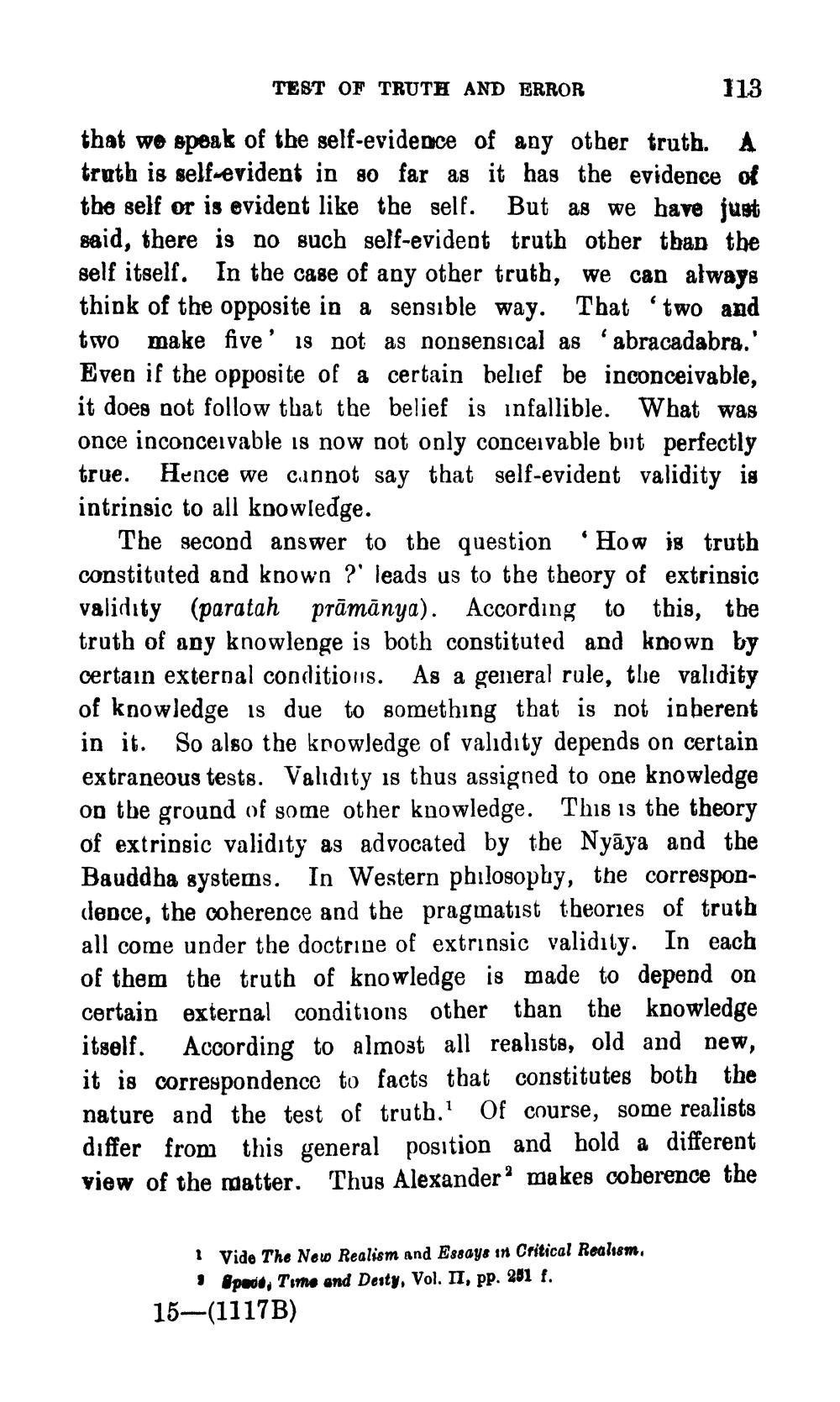________________
TEST OF TRUTH AND ERROR
113
that we speak of the self-evidence of any other truth. A truth is self-evident in so far as it has the evidence of the self or is evident like the self. But as we have just said, there is no such self-evident truth other than the self itself. In the case of any other truth, we can always think of the opposite in a sensible way. That 'two and two make five' is not as nonsensical as 'abracadabra.' Even if the opposite of a certain belief be inconceivable, it does not follow that the belief is infallible. What was once inconceivable 18 now not only conceivable but perfectly true. Hence we cannot say that self-evident validity is intrinsic to all knowledge.
The second answer to the question 'How is truth constituted and known ?' leads us to the theory of extrinsic validity (paratah prāmānya). According to this, the truth of any knowlenge is both constituted and known by certain external conditions. As a general rule, the validity of knowledge is due to something that is not inberent in it. So also the krowledge of validity depends on certain extraneous tests. Validity is thus assigned to one knowledge on the ground of some other knowledge. This is the theory of extrinsic validity as advocated by the Nyāya and the Bauddha systems. In Western philosophy, the correspondence, the coherence and the pragmatist theories of truth all come under the doctrine of extrinsic validity. In each of them the truth of knowledge is made to depend on certain external conditions other than the knowledge itself. According to almost all realists, old and new, it is correspondence to facts that constitutes both the nature and the test of truth. Of course, some realists differ from this general position and hold a different view of the matter. Thus Alexander? makes coberence the
1 Vide The New Realism and Essays in Critical Realism,
: podt, Tome and Derty, Vol. II, pp. 251 f. 15-(1117B)




